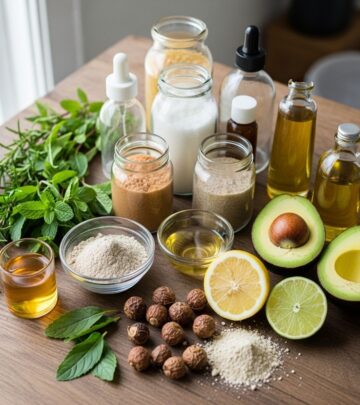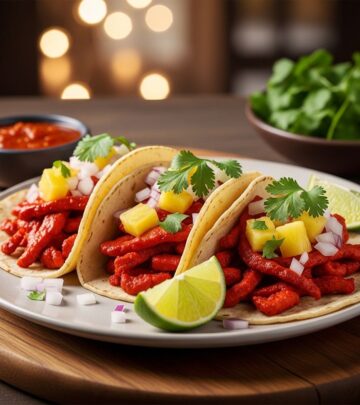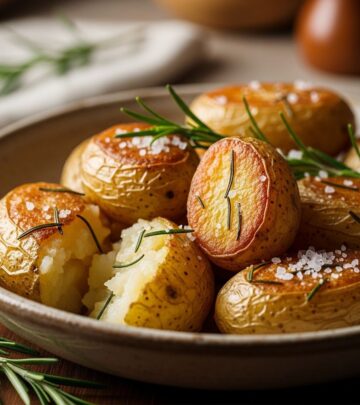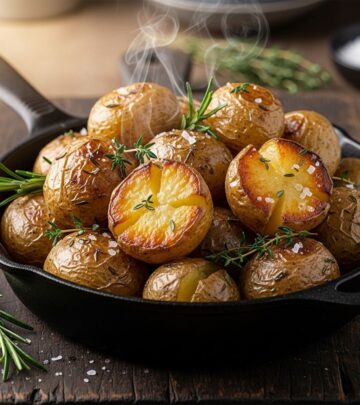Authentic Mole Sauce Recipe: Step-By-Step Guide
Discover the complex flavors and traditional techniques behind Mexico's beloved national dish
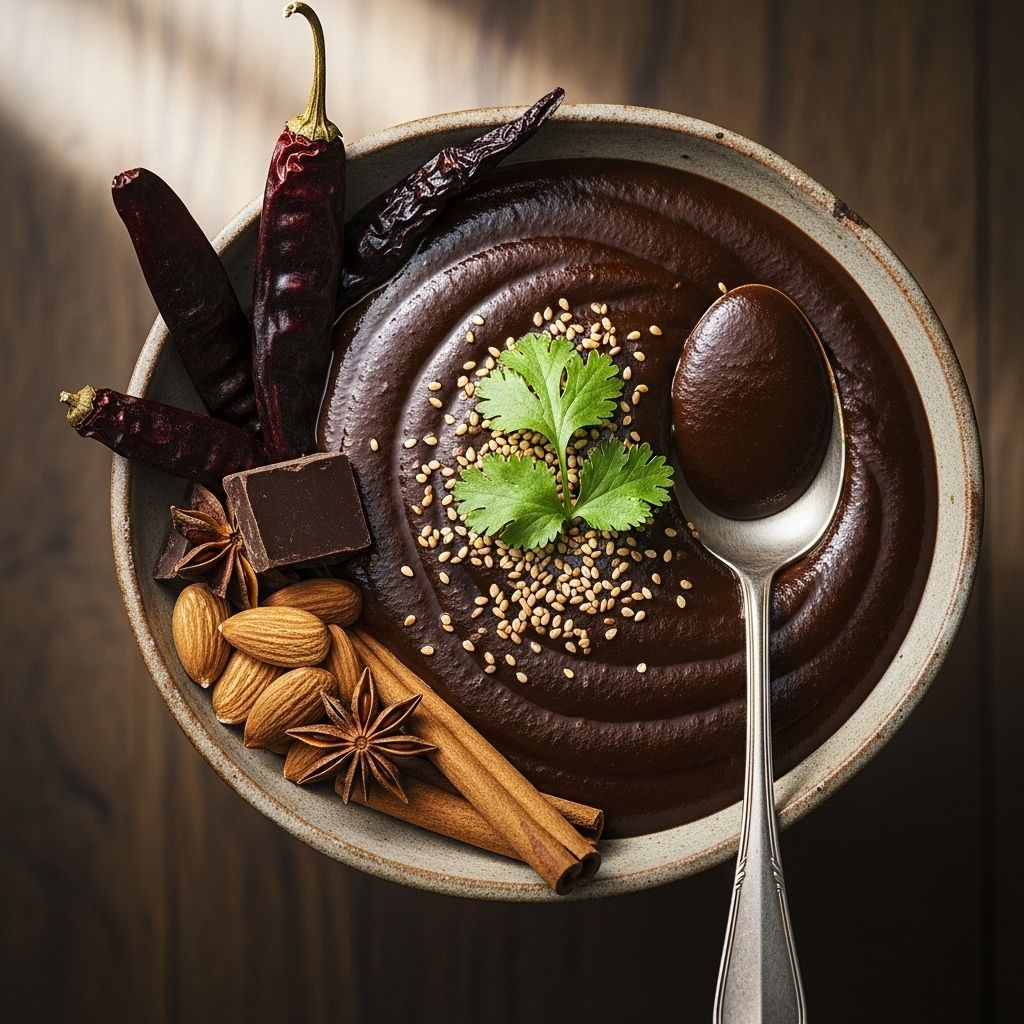
Image: HearthJunction Design Team
Authentic Mexican Mole Sauce: A Rich Culinary Tradition
Mole sauce (pronounced moh-LAY) stands as one of Mexico’s most celebrated culinary treasures, representing centuries of cultural heritage and gastronomic artistry. This complex sauce, with its deep, multidimensional flavors, has earned its place as Mexico’s national dish for good reason. While there are countless regional variations, the classic mole poblano from the Puebla region remains one of the most beloved, combining earthy chiles, rich chocolate, fragrant spices, and numerous other ingredients into a harmonious blend that exemplifies the depth and sophistication of Mexican cuisine.
The beauty of authentic mole lies in its intricate balance of flavors—simultaneously sweet, spicy, smoky, and savory. Creating this sauce from scratch is a labor of love, requiring patience and attention to detail as each ingredient is carefully prepared to contribute its unique character to the final masterpiece. Though the process may seem intimidating at first, the result is well worth the effort, yielding a sauce that transforms any dish it accompanies into something truly extraordinary.
The Rich History and Cultural Significance of Mole
Mole sauce has deep roots in Mexican culinary history, with origins dating back to pre-Hispanic times, though the sauce as we know it today developed during the colonial period. The word “mole” comes from the Nahuatl word “molli,” meaning sauce or mixture. Legend has it that in the 16th century, nuns from the Convent of Santa Rosa in Puebla created the first mole poblano when tasked with preparing a special dish for a visiting archbishop. They combined indigenous ingredients with those introduced by Spanish colonizers, including chocolate, which was consumed as a bitter beverage by the Aztecs but transformed into a key component of this savory sauce.
Today, mole is not just a sauce but a symbol of Mexican identity and culinary ingenuity. It features prominently in celebrations, particularly weddings and holidays, where its presence signifies the importance of the occasion. The preparation of mole traditionally brings families together, as the labor-intensive process often requires many hands and becomes a communal activity passed down through generations.
Essential Ingredients for Authentic Mole Sauce
The magic of mole comes from its intricate blend of ingredients, each contributing an essential element to the complex flavor profile. While recipes vary widely, authentic mole poblano typically includes:
Dried Chiles
The foundation of mole sauce comes from a variety of dried chiles, each bringing unique flavor notes:
- Ancho chiles – Dried poblano peppers with a fruity, raisin-like sweetness and mild heat
- Guajillo chiles – Bright, tangy flavor with moderate spiciness
- Pasilla chiles – Complex, almost chocolatey flavor with notes of dried fruit
- Chipotle chiles – Smoked jalapeños that add smoky depth and heat
Nuts and Seeds
These ingredients provide richness and thickening power:
- Sesame seeds – Adding nutty flavor and helping to thicken the sauce
- Peanuts – Contributing richness and subtle sweetness
- Almonds – Providing texture and depth
- Pepitas (pumpkin seeds) – Offering earthy notes and body
Fruits and Vegetables
These ingredients balance the sauce with sweetness and acidity:
- Tomatillos – Bringing bright acidity and tanginess
- Ripe tomatoes – Adding natural sweetness and umami
- Raisins – Contributing subtle sweetness and complexity
- Plantains or bananas – Providing natural sweetness and body
- Onions and garlic – Forming an aromatic base
Chocolate and Spices
These elements unite the diverse ingredients with warmth and depth:
- Mexican chocolate – Typically Ibarra or Abuelita, containing sugar and cinnamon
- Cinnamon – Preferably Mexican canela, which is softer and more complex than cassia cinnamon
- Cloves – Adding aromatic warmth
- Black pepper – Providing subtle heat
- Cumin – Contributing earthy notes
- Oregano – Preferably Mexican oregano for its citrusy notes
- Anise seeds – Adding licorice-like flavor
The Art of Preparing Authentic Mole Sauce
Creating authentic mole sauce is a methodical process that involves several key steps, each critical to developing the sauce’s characteristic depth and complexity. While modern adaptations might simplify some aspects, traditional preparation methods bring out the fullest expression of the ingredients.
Toasting: The Foundation of Flavor
The first and perhaps most crucial step in making mole is properly toasting each ingredient to develop its flavor. This process transforms raw ingredients into complex building blocks that will form the sauce’s distinctive profile:
- Start by carefully toasting the dried chiles in a dry skillet over medium heat until they become fragrant and slightly pliable, being careful not to burn them as this would create bitterness.
- Toast nuts and seeds until golden brown and aromatic, stirring constantly to prevent burning.
- For bread or tortillas, toast until golden brown to add body to the sauce.
- Roast tomatoes and tomatillos until their skins blister and char, intensifying their flavors.
- Sauté onions and garlic until translucent and sweet.
Blending: Creating Harmony
After toasting, each ingredient group is typically blended with chicken or vegetable broth to create a smooth mixture. This requires:
- Soaking toasted chiles in hot water until soft, then removing stems and seeds.
- Working in batches, blend ingredients with enough broth to create a smooth paste.
- Strain each batch through a fine-mesh sieve to remove any tough bits of skin or seeds, ensuring a silky texture.
Simmering: Building Depth
The final crucial step involves slowly simmering all the blended ingredients together:
- Heat oil or lard in a large, heavy pot and add the strained chile paste, cooking until it darkens and thickens.
- Gradually incorporate the remaining blended ingredients, stirring constantly to prevent sticking.
- Add chocolate and allow it to melt completely into the sauce.
- Gradually add more broth to achieve the desired consistency, typically thick enough to coat a spoon but not overly dense.
- Simmer gently for at least 30 minutes, preferably longer (some traditional recipes call for several hours), stirring occasionally to prevent sticking and to allow flavors to fully meld.
Serving Traditional Mole Sauce
Authentic mole sauce is incredibly versatile and can elevate many dishes to new heights. Here are some traditional serving suggestions:
Classic Pairings
- Mole Poblano con Pollo – The most iconic preparation, featuring poached or roasted chicken smothered in mole sauce, often garnished with sesame seeds and served with warm tortillas
- Enchiladas de Mole – Corn tortillas filled with shredded chicken, dipped in mole sauce, and topped with crumbled cheese
- Enmoladas – Similar to enchiladas but typically just folded tortillas bathed in mole sauce
- Pavo en Mole – Turkey in mole sauce, traditionally served for special occasions
Accompaniments
Traditional sides that complement the rich flavors of mole include:
- Mexican rice, often colored red with tomato
- Refried beans
- Fresh, warm corn tortillas
- Pickled onions or other acidic elements to cut through the richness
Storing and Preserving Your Mole
One of the beautiful aspects of mole sauce is that it often tastes even better after the flavors have had time to meld. Here’s how to properly store your creation:
- Refrigerate in an airtight container for up to 5 days.
- Freeze portions in freezer-safe containers for up to 3 months.
- When reheating, add additional broth as needed to achieve the desired consistency, as the sauce tends to thicken when stored.
Regional Variations of Mole
While mole poblano is perhaps the best-known version internationally, Mexico boasts a rich tapestry of regional mole variations, each with its own character and ingredients:
- Mole Negro (Oaxaca) – The darkest and most complex of the seven traditional Oaxacan moles, featuring a higher proportion of chiles and chocolate
- Mole Verde (various regions) – A bright, herb-forward mole made with green chiles, pumpkin seeds, and herbs like epazote and hoja santa
- Mole Amarillo (Oaxaca) – A yellow mole featuring yellow chiles, tomatillos, and herbs
- Mole Coloradito (Oaxaca) – A reddish mole with a balance of sweet and spicy flavors
- Mole Manchamanteles – “Tablecloth stainer” mole incorporating fruits like pineapple and apple
Frequently Asked Questions about Mole Sauce
Q: Is mole sauce always made with chocolate?
A: No, not all mole sauces contain chocolate. While mole poblano and mole negro typically include chocolate, many regional variations like mole verde and mole amarillo do not use chocolate at all. The chocolate in mole poblano adds richness and helps balance the chile heat rather than making the sauce taste like chocolate.
Q: Is authentic mole sauce difficult to make?
A: Traditional mole sauce is time-consuming rather than technically difficult. The process involves multiple steps of toasting, blending, and simmering numerous ingredients. While it requires patience and attention to detail, the techniques themselves are straightforward. Many cooks prepare large batches and freeze portions for future use.
Q: Can I adjust the spiciness of mole sauce?
A: Yes. The heat level can be adjusted by varying the types and amounts of chiles used. For a milder sauce, remove more of the seeds and veins from the chiles or substitute milder varieties. For a spicier version, include more seeds or add hotter chile varieties like árbol chiles.
Q: What can I substitute for Mexican chocolate?
A: If Mexican chocolate (such as Ibarra or Abuelita) is unavailable, you can substitute dark chocolate (70% cocoa or higher) mixed with a small amount of ground cinnamon and a touch of granulated sugar. This won’t perfectly replicate the texture and flavor of Mexican chocolate, which contains cinnamon and sugar already, but will provide a reasonable alternative.
Q: How can I tell when my mole sauce is finished cooking?
A: A properly finished mole sauce should have a velvety, slightly thick consistency that coats the back of a spoon. The oil should be incorporated rather than separating, and the flavors should taste harmonious rather than disjointed. Most importantly, any raw or bitter flavors from the chiles should have mellowed during the cooking process.
Creating authentic mole sauce is a culinary journey that connects you to centuries of Mexican tradition and craftsmanship. While the process requires time and attention, the resulting sauce—rich, complex, and deeply satisfying—offers a true taste of Mexico’s gastronomic heritage that simply cannot be replicated with shortcuts or store-bought alternatives. Whether served for a special celebration or as a memorable family meal, homemade mole sauce represents cooking at its most soulful and rewarding.
References
- https://www.allrecipes.com/recipe/223261/authentic-mole-sauce/
- https://www.allrecipes.com/recipe/76662/mexican-mole-sauce/
- https://www.allrecipes.com/recipes/16084/side-dish/sauces-and-condiments/sauces/mole-sauce/
- https://www.allrecipes.com/recipe/213733/chicken-mole/
- https://tastesbetterfromscratch.com/mole-sauce/
Read full bio of Shinta




